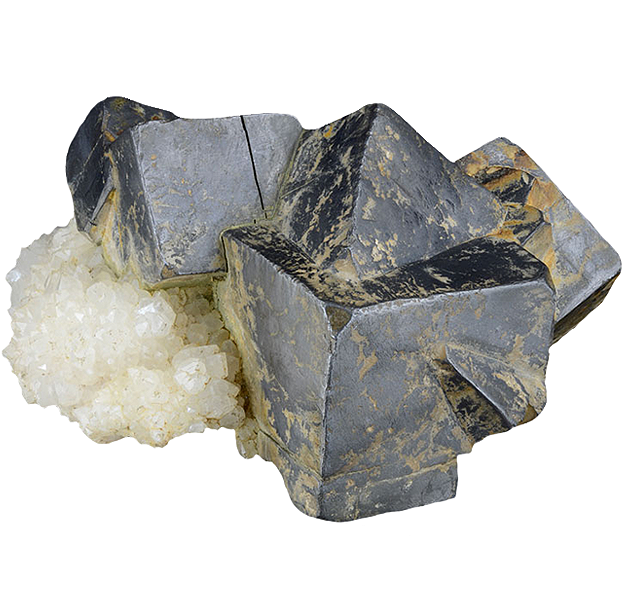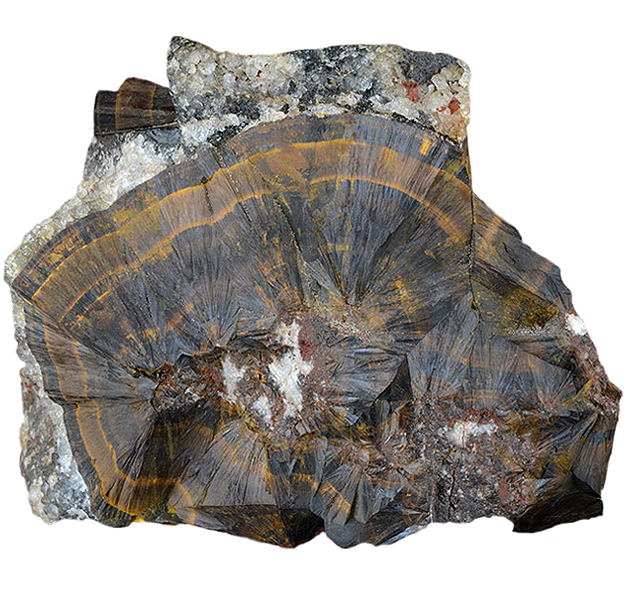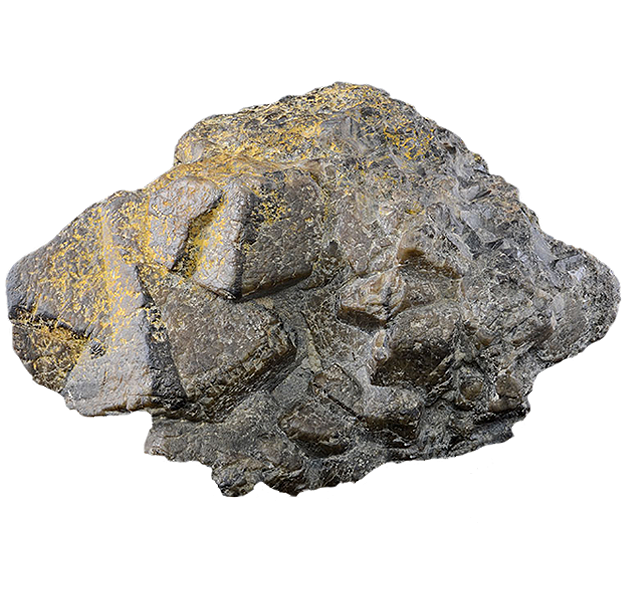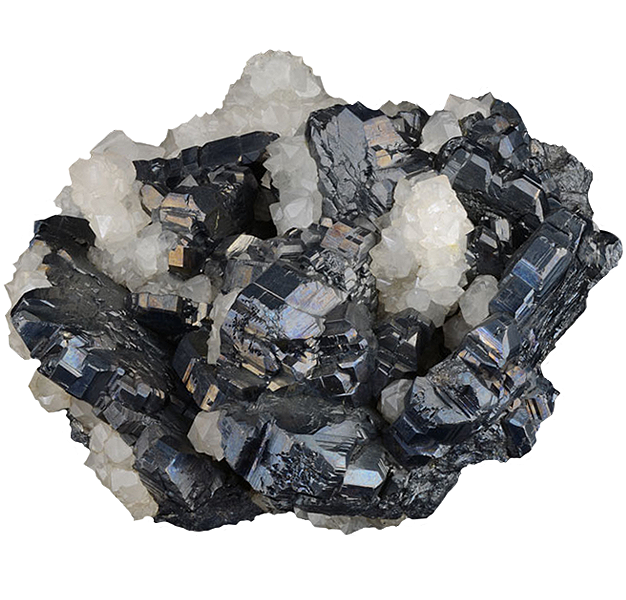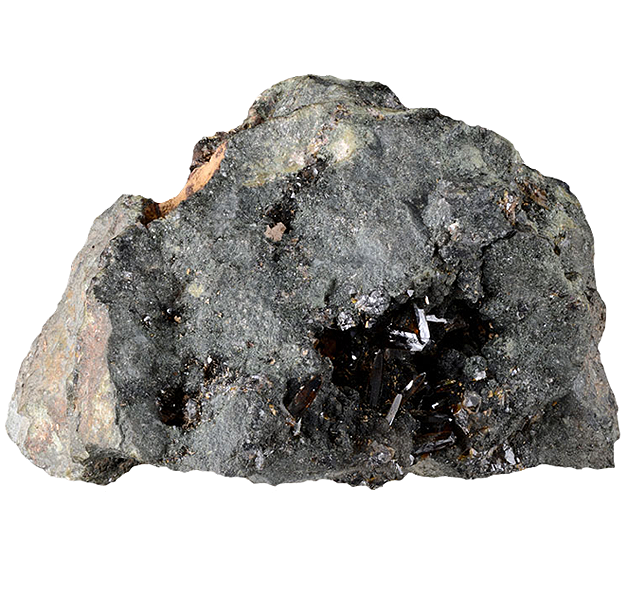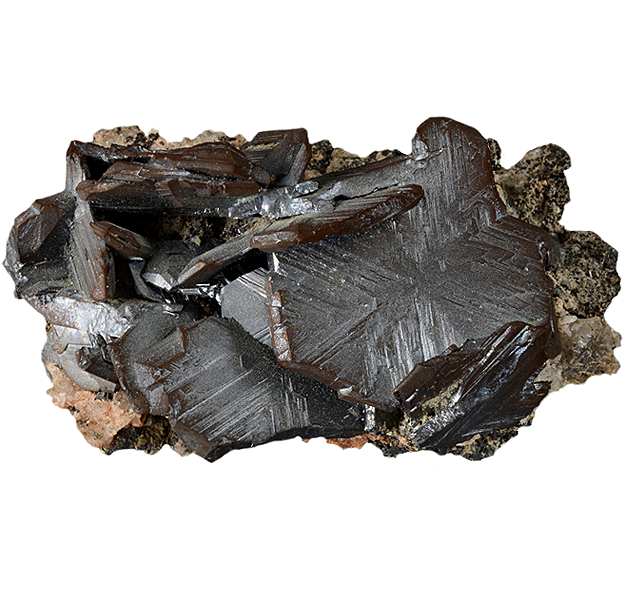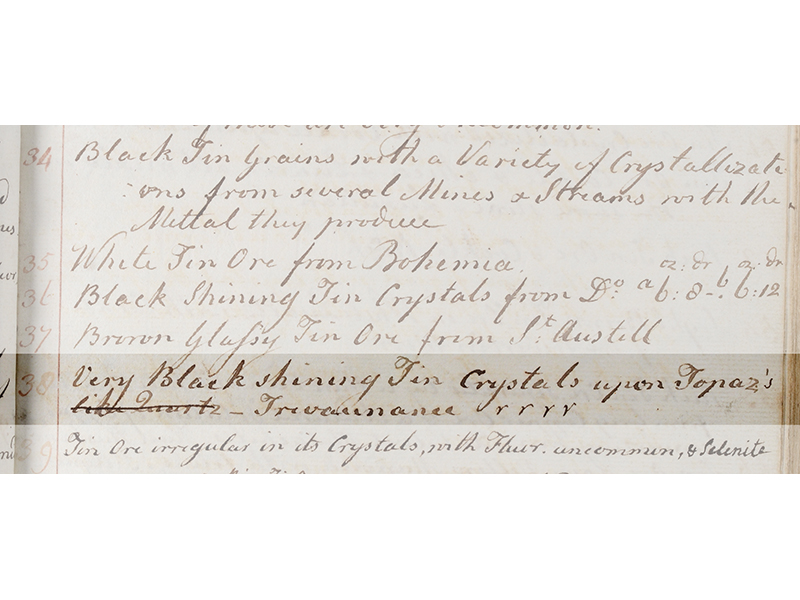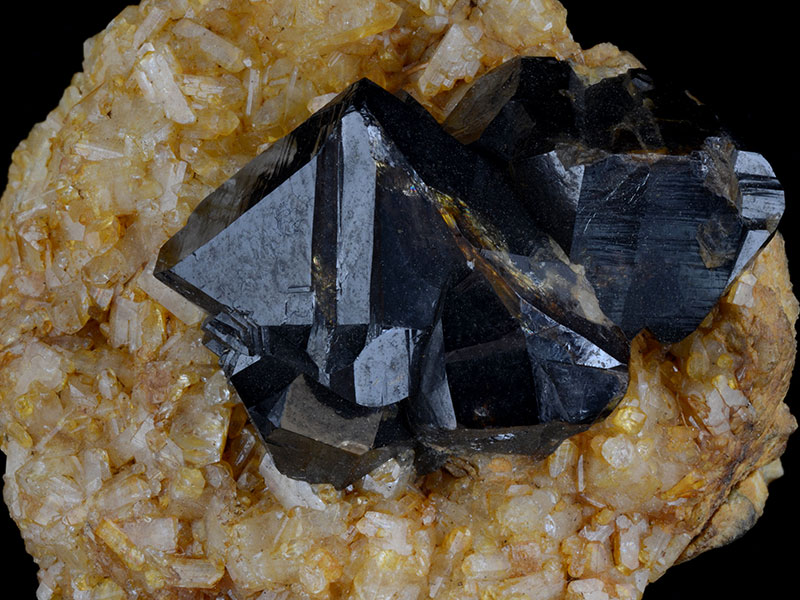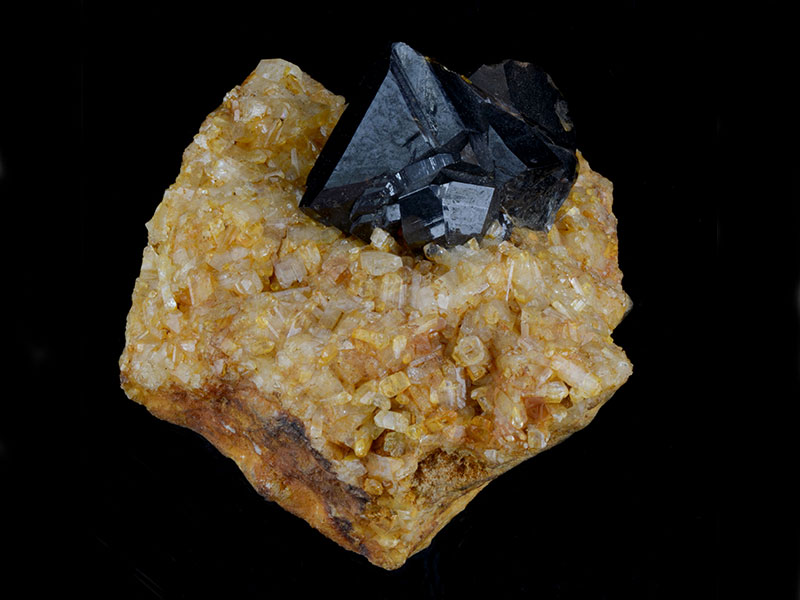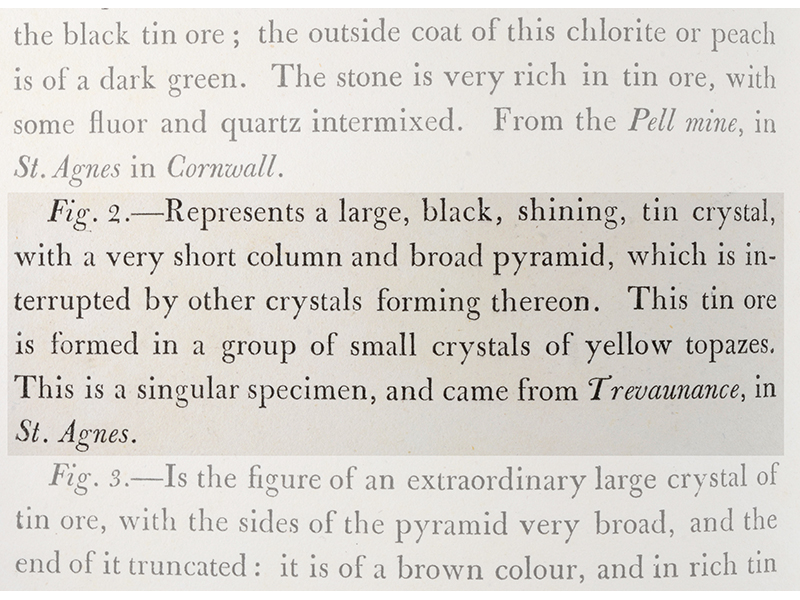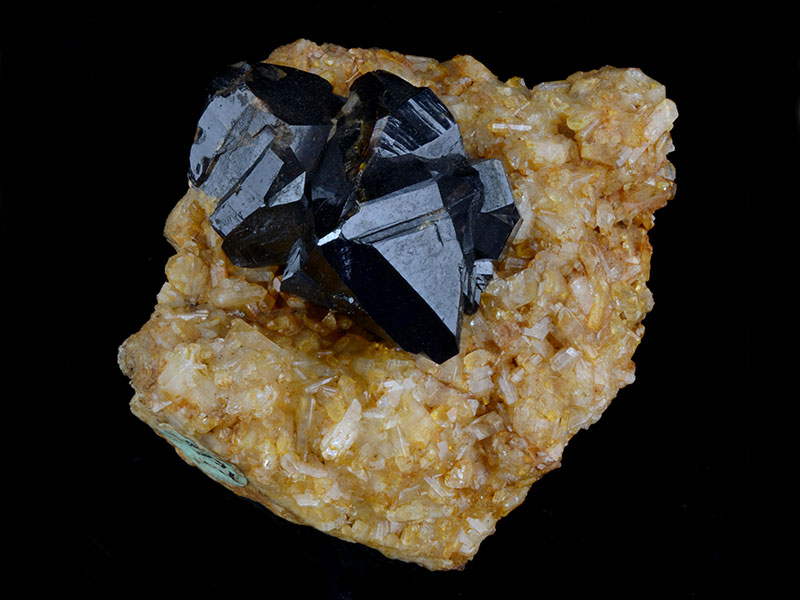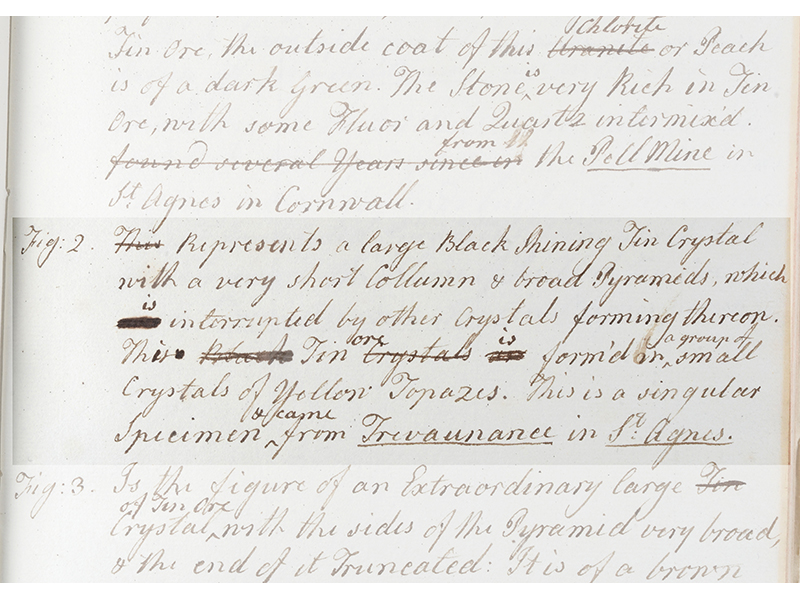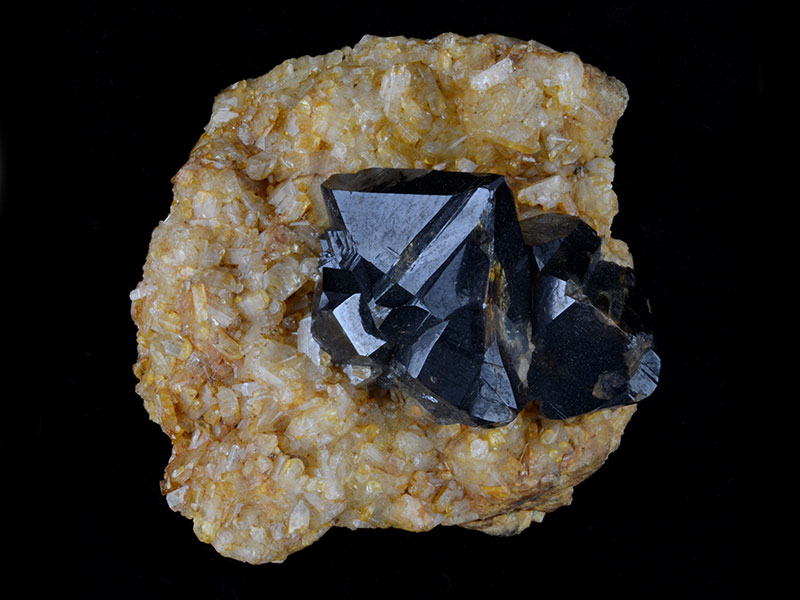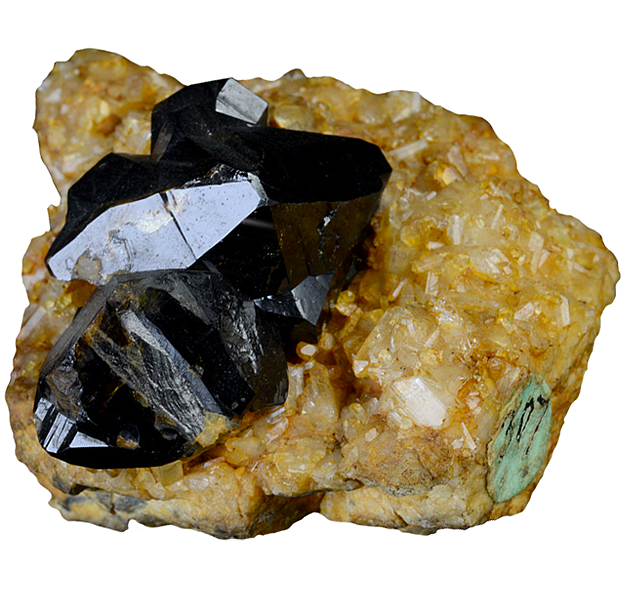
Fact sheet
Unusually fine crystals of cassiterite (tin oxide) can have a value beyond that of the tin they contain. This specimen that came from Trevaunance near St Agnes, was acquired by gentleman-collector Philip Rashleigh early on in his collecting career. It shows large cassiterite crystals intergrown (or twinned) with each other.
Rashleigh included this specimen in the first of two illustrated books he produced on British minerals, published in 1797 and 1802. His description of the specimen reads:
"Fig. 2. - Represents a large, black, shining tin crystal with a very short column and broad pyramid which is interrupted by other crystals forming thereon. This tin ore is formed in a group of small crystals of topazes. This is a singular specimen and came from Trevaunance, in St Agnes.”
The entry in the manuscript catalogue of his collection reads: "38 Very Black shining Tin Crystals upon Topaz’s – Trevaunance r r r r"
Rashleigh used the letter ‘r’ to indicate how rare a specimen was: the greater the number of ‘r’s the rarer the specimen.
Chemical Formulae: cassiterite = SnO2
topaz = Al2SiO4(F,OH)2
Specimen no. TRURI: 1903.1.851
Location: Trevaunance, St Agnes
Grid Reference: SW711 508
Mindat Cassiterite http://www.mindat.org/min-917.html
Mindat Topaz http://www.mindat.org/min-3996.html
This Collection focuses on Cornwall and West Devon’s mineralogical and mining heritage. The specimens it features are drawn from the collection of the Royal Institution of Cornwall (RIC) held at the Royal Cornwall Museum (RCM).
This collaborative project involving the RCM, the Cornish Mining World Heritage Site and The Open University explores how access to the RIC’s mineral collection and the stories it can tell can be widened using digital technology. It includes radioactive minerals from Cornwall that would otherwise be inaccessible to the public for health and safety reasons.
Sample details
More from this collection
